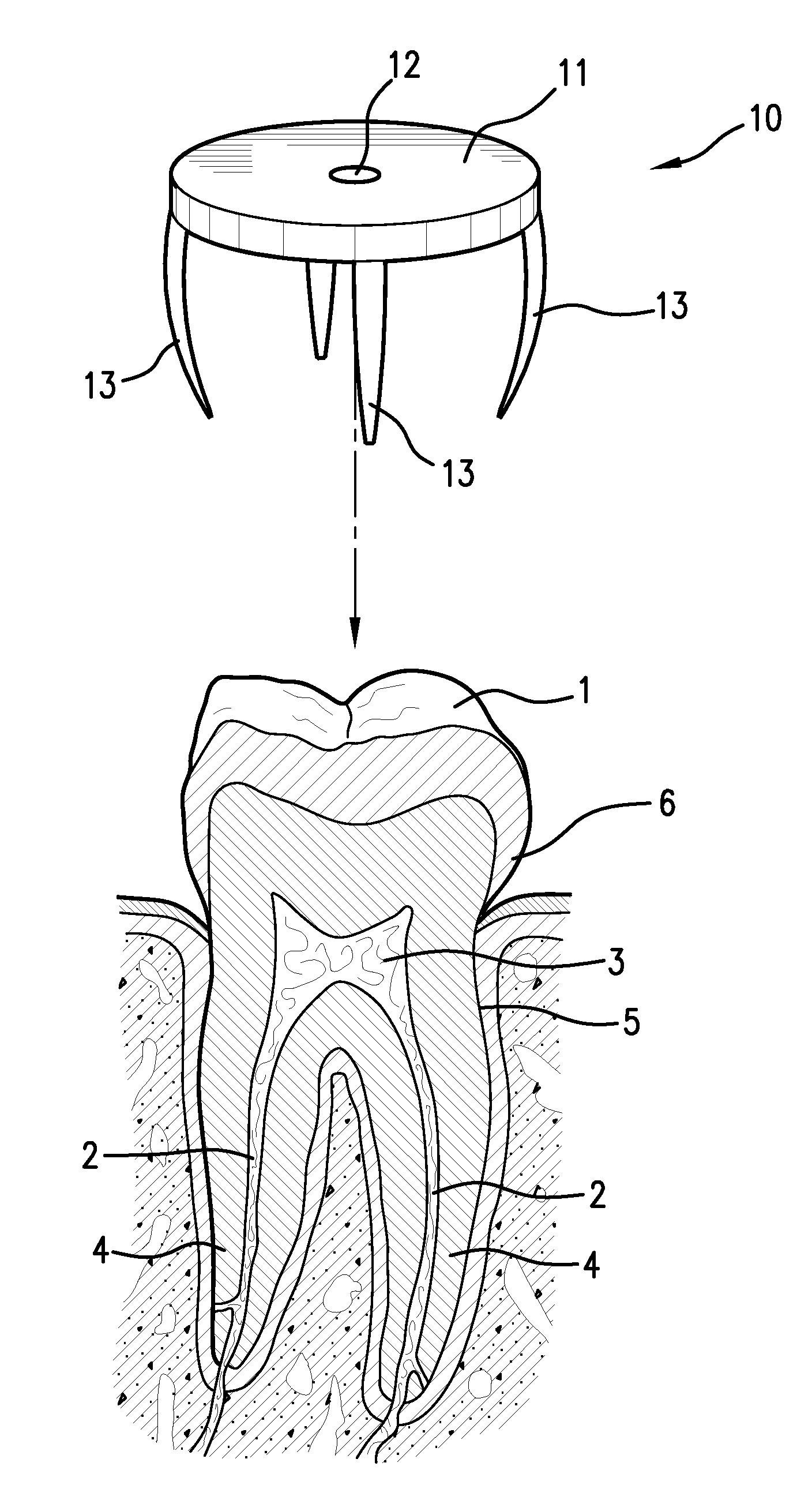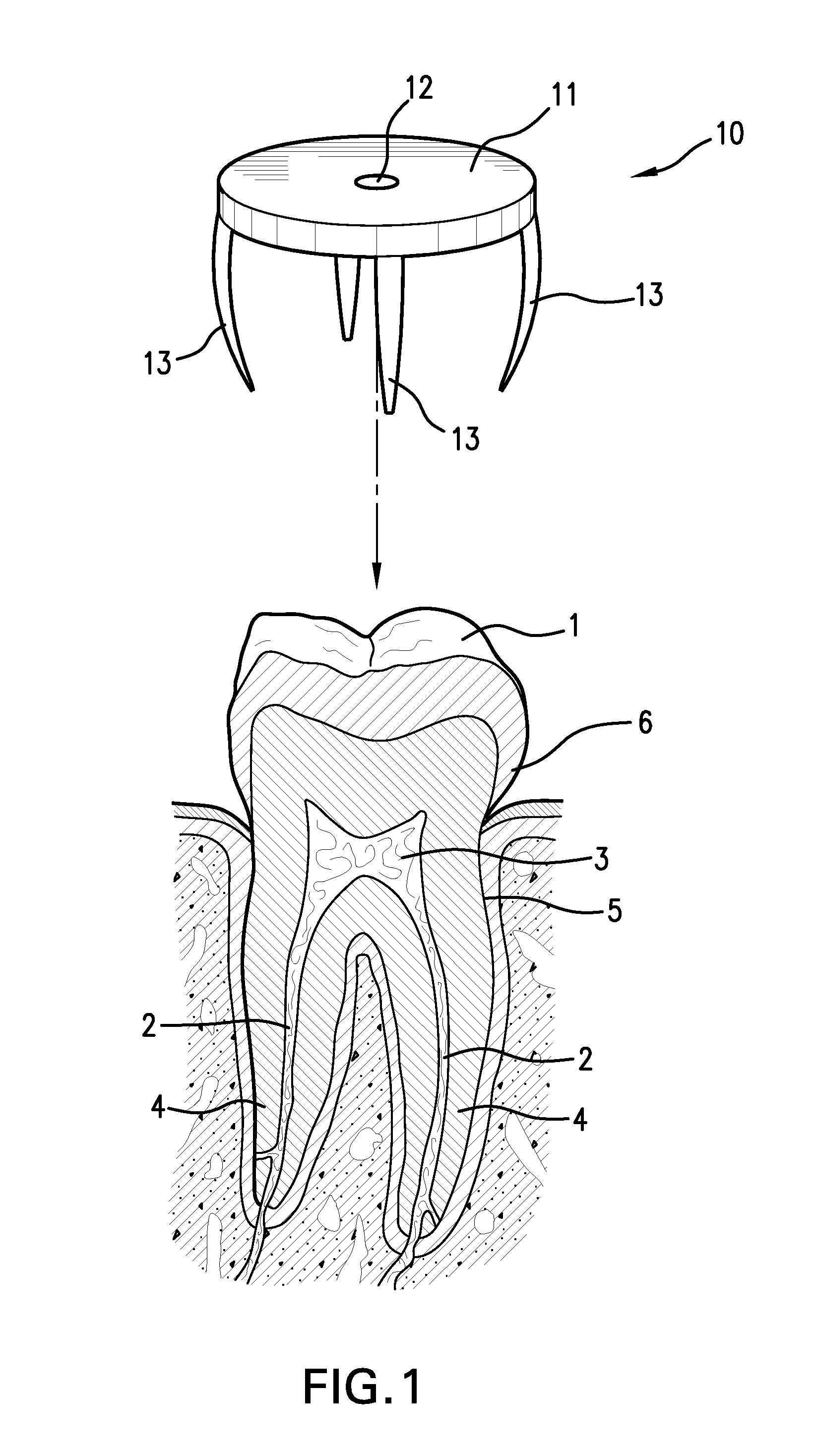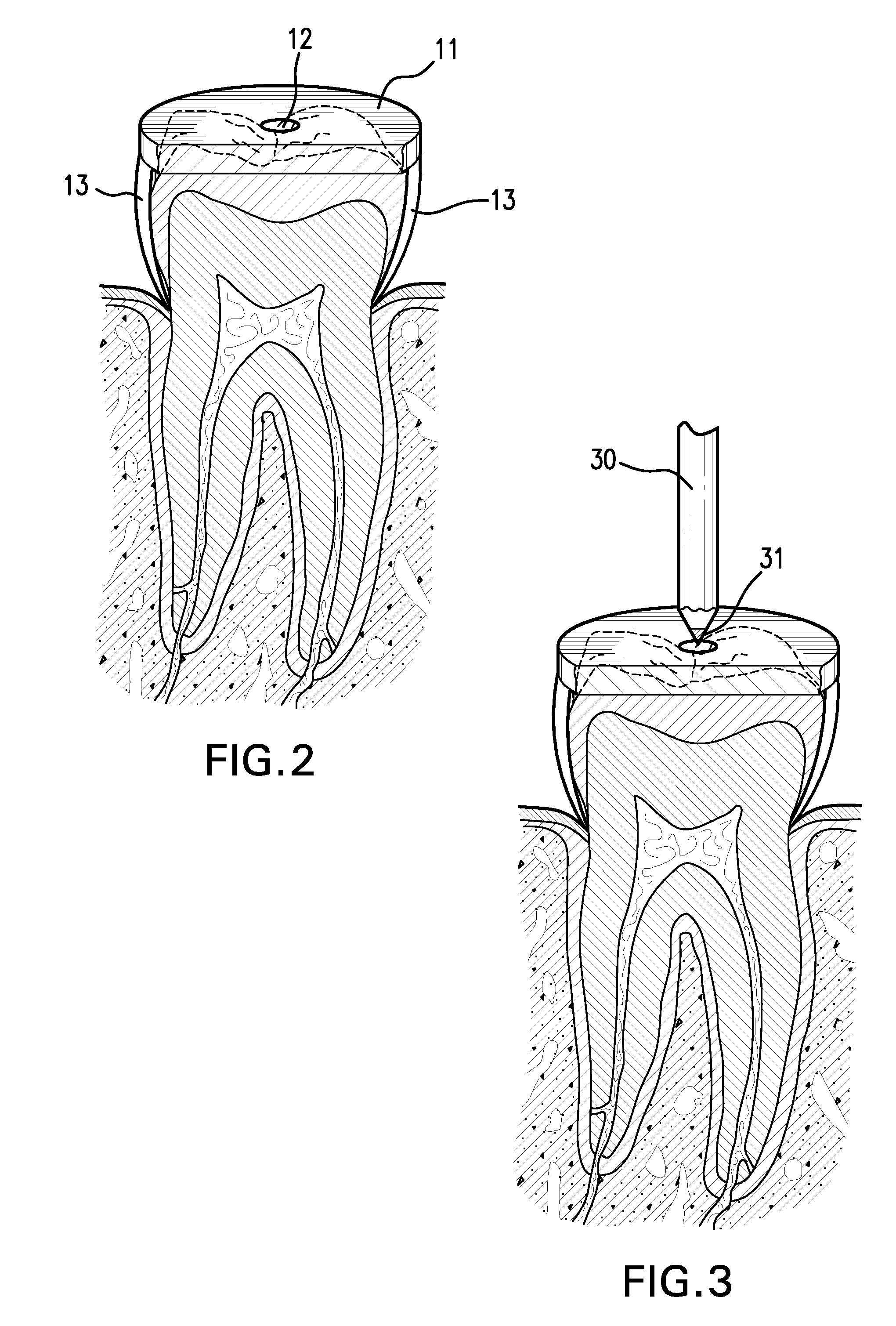Device and method for locating a pulp chamber in a tooth
a technology a tooth is applied in the field of dental devices and methods for locating a pulp chamber in a tooth, which can solve the problems of severe toothache and/or infection, difficult to ascertain the location of the pulp chamber, and inability to move the infection into the bone, etc., and achieves the effect of convenient attachment to the tooth
- Summary
- Abstract
- Description
- Claims
- Application Information
AI Technical Summary
Benefits of technology
Problems solved by technology
Method used
Image
Examples
Embodiment Construction
[0046]The device of the present invention enables a dentist easily to locate the pulp chamber of a tooth. Thus, in this specification, the device will be called a pulp chamber locator.
[0047]FIG. 1 shows the pulp chamber locator 10 before it has been attached to the crown 1 of a tooth. The pulp chamber locator comprises a plate 11 which is generally flat and of generally circular shape. In the center of the plate is a hole 12. A plurality of struts 13 are connected to the plate, at the periphery of the plate, and extend downward from the plate. Each strut thus has a first end which is attached to the plate, and a second end which is a free end. In the embodiment shown, there are four struts. In most preferred embodiments, there may be four to six such struts, but the number can be varied.
[0048]Preferably, the plate and the struts are made of plastic, but the invention is not limited to a particular choice of material. Preferably the plate and the struts are formed of one piece. The s...
PUM
 Login to View More
Login to View More Abstract
Description
Claims
Application Information
 Login to View More
Login to View More - R&D
- Intellectual Property
- Life Sciences
- Materials
- Tech Scout
- Unparalleled Data Quality
- Higher Quality Content
- 60% Fewer Hallucinations
Browse by: Latest US Patents, China's latest patents, Technical Efficacy Thesaurus, Application Domain, Technology Topic, Popular Technical Reports.
© 2025 PatSnap. All rights reserved.Legal|Privacy policy|Modern Slavery Act Transparency Statement|Sitemap|About US| Contact US: help@patsnap.com



